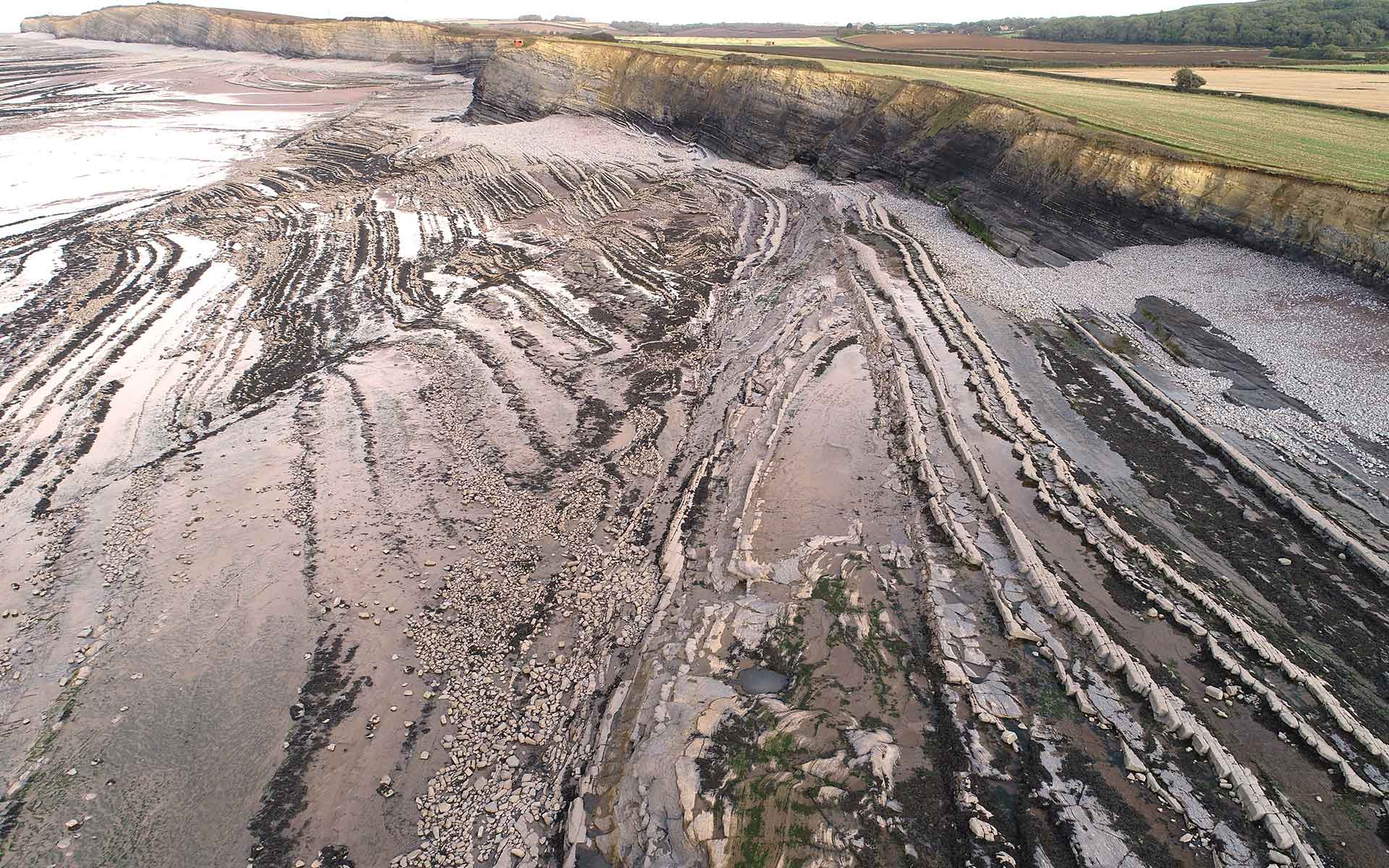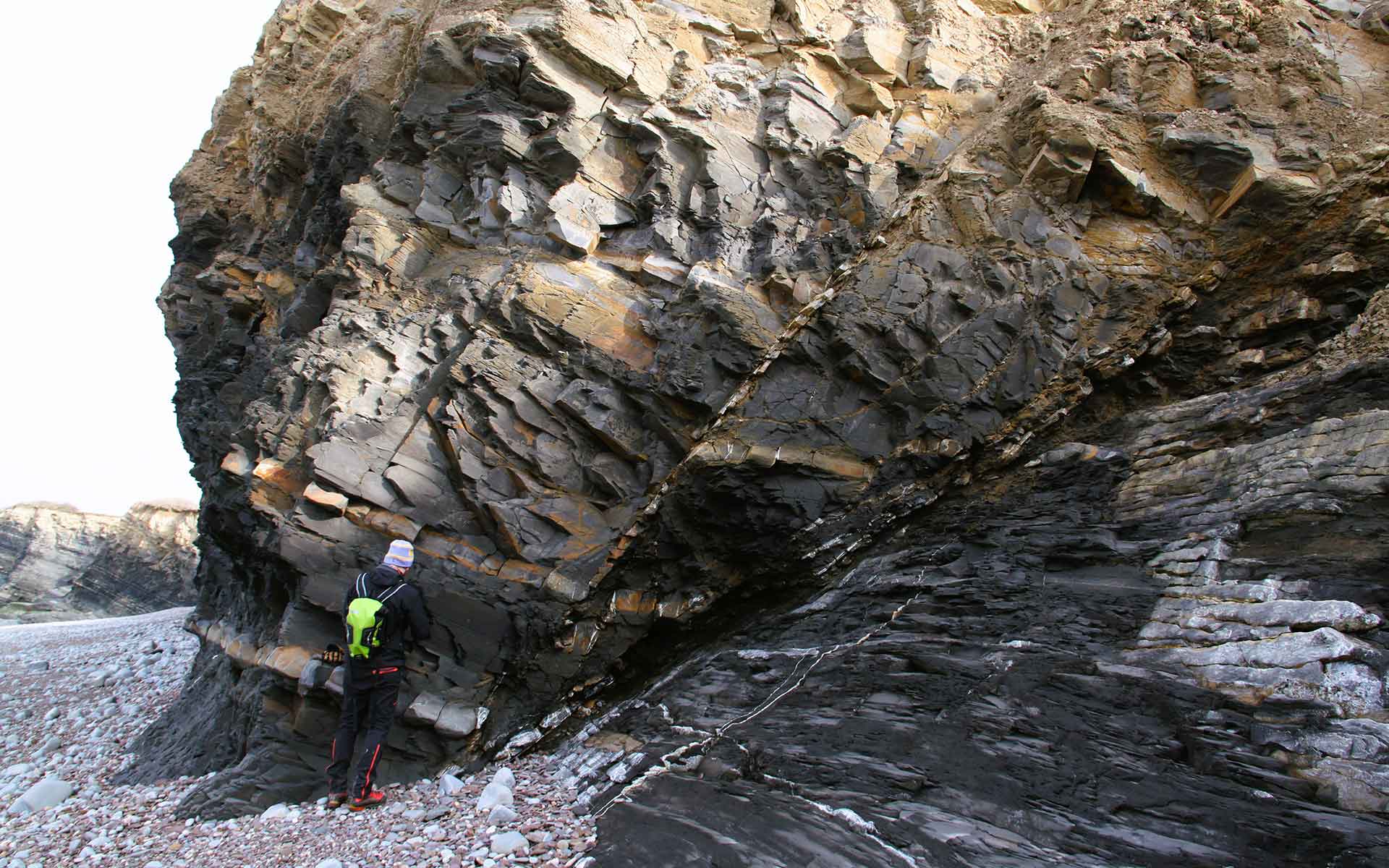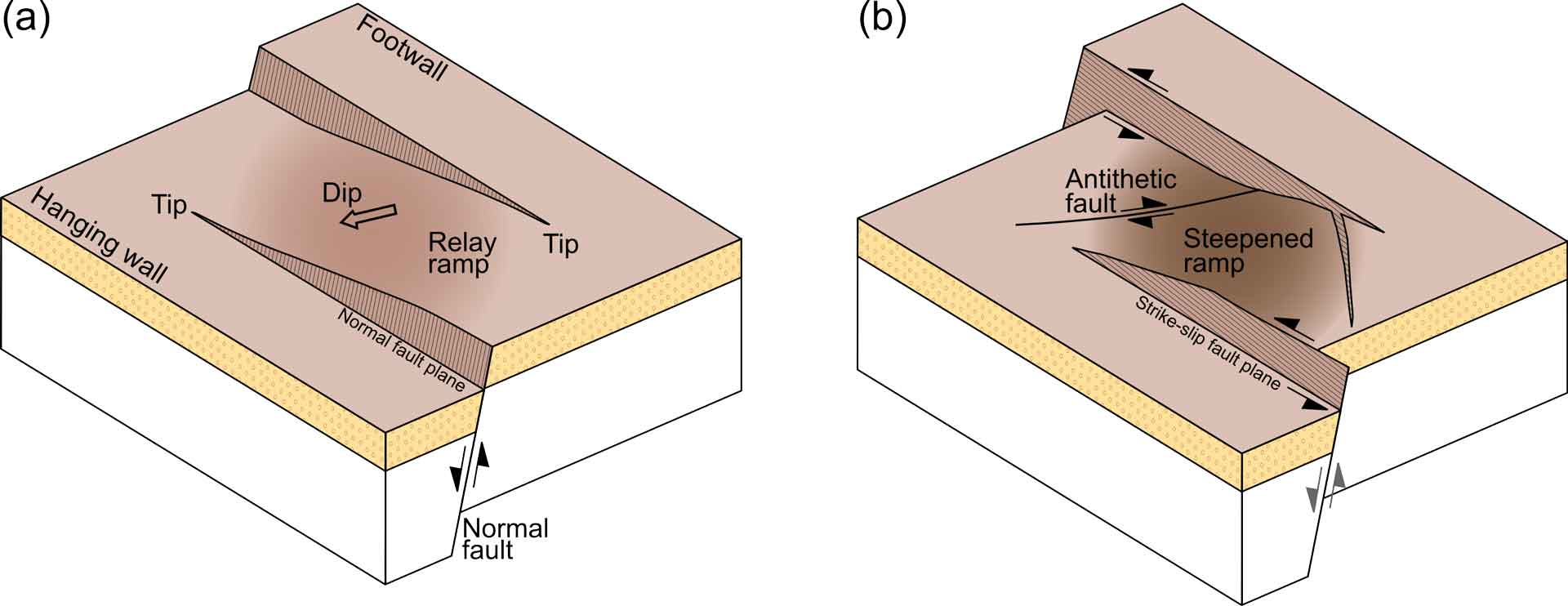
Photograph taken from a drone looking eastwards from Kilve, showing normal faults and folds exposed on the beach and cliffs.
Geological Period
Upper Triassic to Lower Jurassic
Main geological interest
Tectonics
Stratigraphy and sedimentology
Location
Somerset, United Kingdom
51°11’33”N, 003°13’37”W
Photograph taken from a drone looking eastwards from Kilve, showing normal faults and folds exposed on the beach and cliffs.
Spectacular and most studied exposures of brittle structures related to basin development and inversion.
The Somerset coast is a wonderful natural laboratory for studying the geometries, kinematics and mechanics of a range of related brittle structures. These include normal fault zones that allow detailed investigations of fault growth and linkage at various stages of faulting, damage zones around a range of fault types, the relationships between faults, folds and joints, and the patterns of joints exposed on bedding planes. The area has been used increasingly as a World-class location for both research and teaching on brittle tectonics.
- Geological description
The Somerset coast displays fantastic exposures of faults, folds, veins and joints (Hancock, 1985) in Permo-Triassic marls and sandstones and in Liassic shales and limestones (Whittaker and Green, 1983). The ~E-W striking normal faults formed during Mesozoic extension (Dart et al., 1995). They have throws of up to several hundred metres. The faults exhibit various stages of growth and linkage, which in many cases can be observed on both the wave-cut platform and in the adjacent cliffs. Folds accommodate displacement variations along the normal faults, veins occur in damage zones, and gouge and veining occurs along the faults. Sandstone dykes and deformation bands occur in Permo-Triassic sandstones west of Watchet. Some normal faults east of Lilstock show evidence of reactivation as strike-slip faults, including steepened and breached relay ramps. Cenozoic contraction, probably related to the Alpine Orogeny, inverted many of the normal faults and created thrusts, strike-slip faults, veins, pressure solution cleavage and folds. The strike-slip faults typically cross-cut the inverted normal faults and the folds and typically show veins and pressure solution in damage zones (McGrath and Davison, 1995). The youngest structures are joints (Passchier et al., 2021), which abut or cross the strike-slip faults.
- Scientific research and tradition
Hancock (1985) recognised the importance of the area ~ 40 years ago. Somerset has been used increasingly to make fundamental observations and models about brittle tectonics, from the geometry and growth of normal faults, the history of basin inversion, and drones to make detailed maps of faults and joints.
- Reference
Dart, C.J., McClay, K. and Hollings, P.N. (1995) ‘3D analysis of inverted extensional fault systems, southern Bristol Channel basin, UK’, Geological Society, London, Special Publications, 88(1), pp. 393–413. Available at: https://doi.org/10.1144/GSL.SP.1995.088.01.21.
Hancock, P.L. (1985) ‘Brittle microtectonics: principles and practice’, Journal of Structural Geology, 7(3), pp. 437–457. Available at: https://doi.org/10.1016/0191-8141(85)90048-3.
McGrath, A.G. and Davison, I. (1995) ‘Damage zone geometry around fault tips’, Journal of Structural Geology, 17(7), pp. 1011–1024. Available at: https://doi.org/10.1016/0191-8141(94)00116-H.
Passchier, M. et al. (2021) ‘The joint sets on the Lilstock Benches, UK. Observations based on mapping a full resolution UAV-based image’, Journal of Structural Geology, 147, p. 104332. Available at: https://doi.org/10.1016/j.jsg.2021.104332.
Whittaker, A. and Green, G.W. (1983) Geology of the country around Weston-super-Mare. London: H.M.S.O. (Memoir for 1:50,000 geological sheet (England and Wales), Sheet 279 and parts of 263 and 295).
- Author(s)
David Peacock.
University of Göttingen, Germany.


